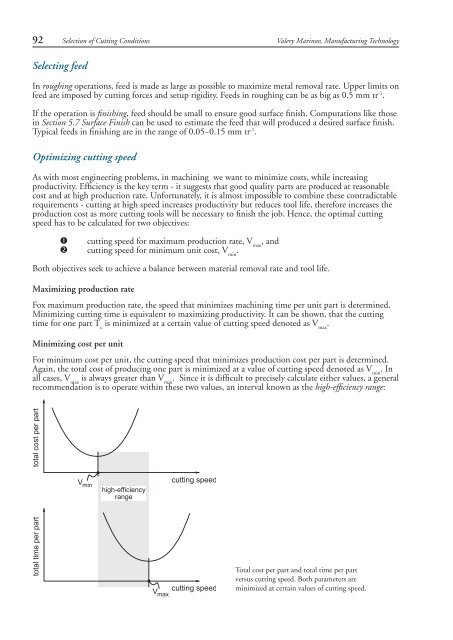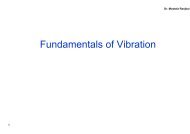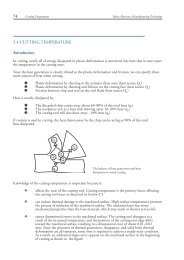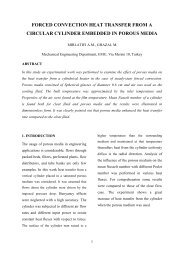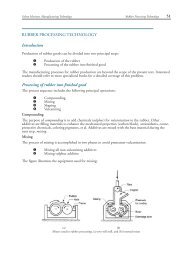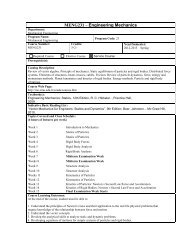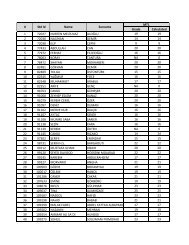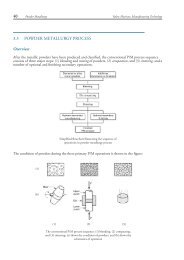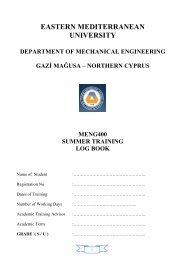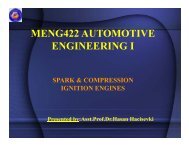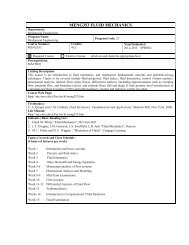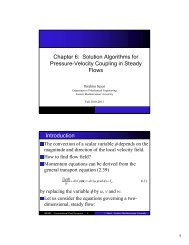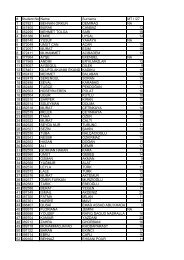5.10 Selection of Cutting Conditions
5.10 Selection of Cutting Conditions
5.10 Selection of Cutting Conditions
Create successful ePaper yourself
Turn your PDF publications into a flip-book with our unique Google optimized e-Paper software.
92 <strong>Selection</strong> <strong>of</strong> <strong>Cutting</strong> <strong>Conditions</strong><br />
Valery Marinov, Manufacturing Technology<br />
Selecting feed<br />
In roughing operations, feed is made as large as possible to maximize metal removal rate. Upper limits on<br />
feed are imposed by cutting forces and setup rigidity. Feeds in roughing can be as big as 0.5 mm tr -1 .<br />
If the operation is finishing, feed should be small to ensure good surface finish. Computations like those<br />
in Section 5.7 Surface Finish can be used to estimate the feed that will produced a desired surface finish.<br />
Typical feeds in finishing are in the range <strong>of</strong> 0.05~0.15 mm tr -1 .<br />
Optimizing cutting speed<br />
As with most engineering problems, in machining we want to minimize costs, while increasing<br />
productivity. Efficiency is the key term - it suggests that good quality parts are produced at reasonable<br />
cost and at high production rate. Unfortunately, it is almost impossible to combine these contradictable<br />
requirements - cutting at high speed increases productivity but reduces tool life, therefore increases the<br />
production cost as more cutting tools will be necessary to finish the job. Hence, the optimal cutting<br />
speed has to be calculated for two objectives:<br />
cutting speed for maximum production rate, V max<br />
, and<br />
cutting speed for minimum unit cost, V min<br />
.<br />
Both objectives seek to achieve a balance between material removal rate and tool life.<br />
Maximizing production rate<br />
Fox maximum production rate, the speed that minimizes machining time per unit part is determined.<br />
Minimizing cutting time is equivalent to maximizing productivity. It can be shown, that the cutting<br />
time for one part T c<br />
is minimized at a certain value <strong>of</strong> cutting speed denoted as V max<br />
.<br />
Minimizing cost per unit<br />
For minimum cost per unit, the cutting speed that minimizes production cost per part is determined.<br />
Again, the total cost <strong>of</strong> producing one part is minimized at a value <strong>of</strong> cutting speed denoted as V min<br />
. In<br />
all cases, V max<br />
is always greater than V min<br />
. Since it is difficult to precisely calculate either values, a general<br />
recommendation is to operate within these two values, an interval known as the high-efficiency range:<br />
Total cost per part and total time per part<br />
versus cutting speed. Both parameters are<br />
minimized at certain values <strong>of</strong> cutting speed.


